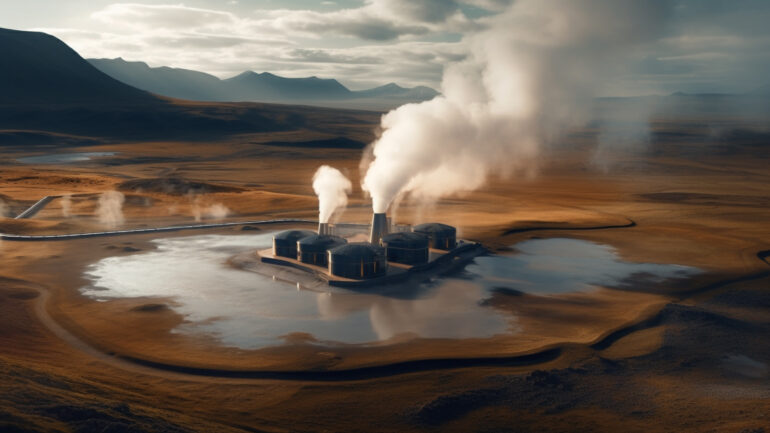Global Demand for Fossil Fuels to Peak Before 2030 – IEA

The World Energy Outlook 2024 report paints a complex picture of the global energy future, highlighting opportunities for rapid clean energy growth while also addressing the vulnerabilities and uncertainties.
The World Energy Outlook 2024 by the International Energy Agency (IEA) gives a comprehensive analysis of the evolving global energy landscape, emphasising three main themes: energy security, the momentum behind clean energy transitions, and uncertainty due to geopolitical tensions.
Energy Security in a Fractured Geopolitical Landscape
The report underscores the heightened risks associated with geopolitical instability, particularly in key energy-producing regions like the Middle East and Russia. Escalating conflicts, such as those in Ukraine and the Middle East, demonstrate how vulnerable global energy systems are to disruptions. Notably, the report highlights that approximately 20% of global oil and LNG supplies pass through the Strait of Hormuz, a crucial chokepoint that remains vulnerable to conflict. While underlying market balances and prices have begun to ease, the risk of supply shocks remains high. The IEA emphasises the need for diversified energy supply chains and infrastructure resilience to mitigate these risks.
Accelerating Clean Energy Transitions
The IEA presents an optimistic outlook on the rapid deployment of clean energy technologies, particularly in the electricity sector. In 2023 alone, over 560 gigawatts (GW) of renewable capacity were added globally, led by solar and wind power. The IEA projects that by 2030, renewable energy sources could potentially generate more than half of the world’s electricity. Investment in clean energy is approaching $2 trillion annually, nearly double the amount spent on fossil fuels.
China emerges as a leader in this transition, accounting for 60% of the new global renewable capacity added in 2023. The report also emphasises that to meet global net-zero targets by 2050, further acceleration and policy support are essential, particularly in grid infrastructure and energy storage. Additionally, the IEA discusses the significant growth potential in electric vehicles (EVs), predicting that nearly every second car sold globally by 2030 will be electric.
The Role of Fossil Fuels
Despite the rise in renewable energy, fossil fuels still play a substantial role in the current global energy mix. However, in the IEA’s Stated Policies Scenario (STEPS), demand for coal, oil, and natural gas is expected to peak before 2030. This shift is mainly driven by structural changes in energy consumption patterns in emerging markets and developed economies. The IEA projects that coal will see a significant decline, while natural gas and oil will remain more resilient due to their roles in industrial processes and petrochemicals.
Nevertheless, the transition away from fossil fuels remains uneven globally, with developing economies continuing to rely on them due to affordability and access challenges. The report stresses the importance of international cooperation and financial support to bridge this gap, ensuring that clean energy transitions are equitable.
Investment, Affordability, and Energy Access
The World Energy Outlook 2024 highlights the need for increased investment in clean energy, particularly in emerging and developing economies. Currently, these regions receive only 15% of global clean energy investments, despite representing two-thirds of the global population. The report calls for international efforts to address the high cost of capital and associated risks that hinder the spread of cost-effective clean energy technologies in these economies. The IEA also discusses innovative business models, like pay-as-you-go systems, which have helped provide access to electricity for millions but notes that significant gaps remain.
The report underscores the persistent energy access issue, with around 750 million people lacking electricity and over 2 billion without clean cooking options, mainly in sub-Saharan Africa. It calls for targeted policy measures and investments to achieve universal energy access by 2030, aligning with the Sustainable Development Goals (SDGs).
Global Scenarios: Pathways to Net Zero
The IEA lays out three main scenarios:
- Stated Policies Scenario (STEPS): This scenario reflects current policy settings and indicates a peak in fossil fuel demand by 2030. However, it predicts that emissions will continue on a trajectory leading to a 2.4°C rise in global temperatures by 2100, falling short of climate targets.
- Announced Pledges Scenario (APS): This scenario assumes that all current national pledges, including net-zero goals, are met. It projects a more optimistic path with a 1.7°C temperature rise by 2100, though significant additional efforts are required to realise these pledges fully.
- Net Zero Emissions by 2050 (NZE) Scenario: This scenario outlines a narrow pathway to limit global warming to 1.5°C. Achieving this requires unprecedented acceleration in clean energy adoption, increased energy efficiency, and substantial investments in low-carbon technologies.
Energy Affordability and Market Implications
The report discusses the implications of lower fuel prices due to increased supply capacity and competitive clean technology costs. It notes that while this provides relief for fuel-importing economies, it could also slow the transition to cleaner technologies as cheaper natural gas and oil diminish the economic incentives for switching to renewables.
The IEA emphasises that to maintain momentum toward net-zero goals, investment must focus not only on renewable generation but also on grids and storage. Current investment in these areas is not sufficient to keep pace with rising electricity demand, driven by new uses like electric vehicles, data centres, and cooling systems. Ensuring affordable and secure energy access in a transitioning market remains crucial for global economic stability.
A Call for Action The World Energy Outlook 2024 paints a complex picture of the global energy future, highlighting opportunities for rapid clean energy growth while also addressing the vulnerabilities and uncertainties that come with geopolitical tensions and reliance on fossil fuels. The report calls for decisive action from governments, investors, and industries to accelerate clean energy transitions, invest in resilient infrastructure, and ensure that the benefits of a new energy economy are equitably distributed.





